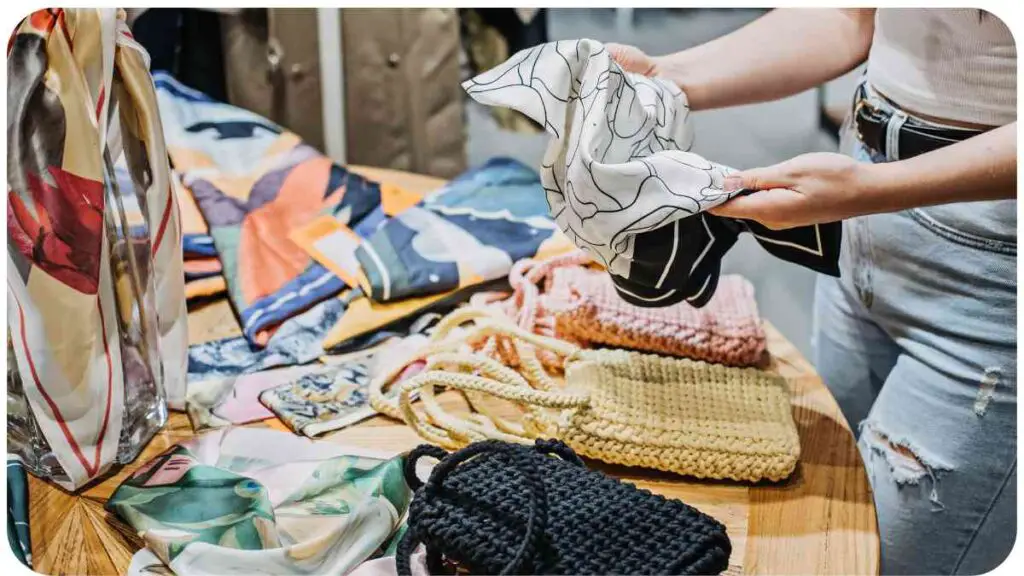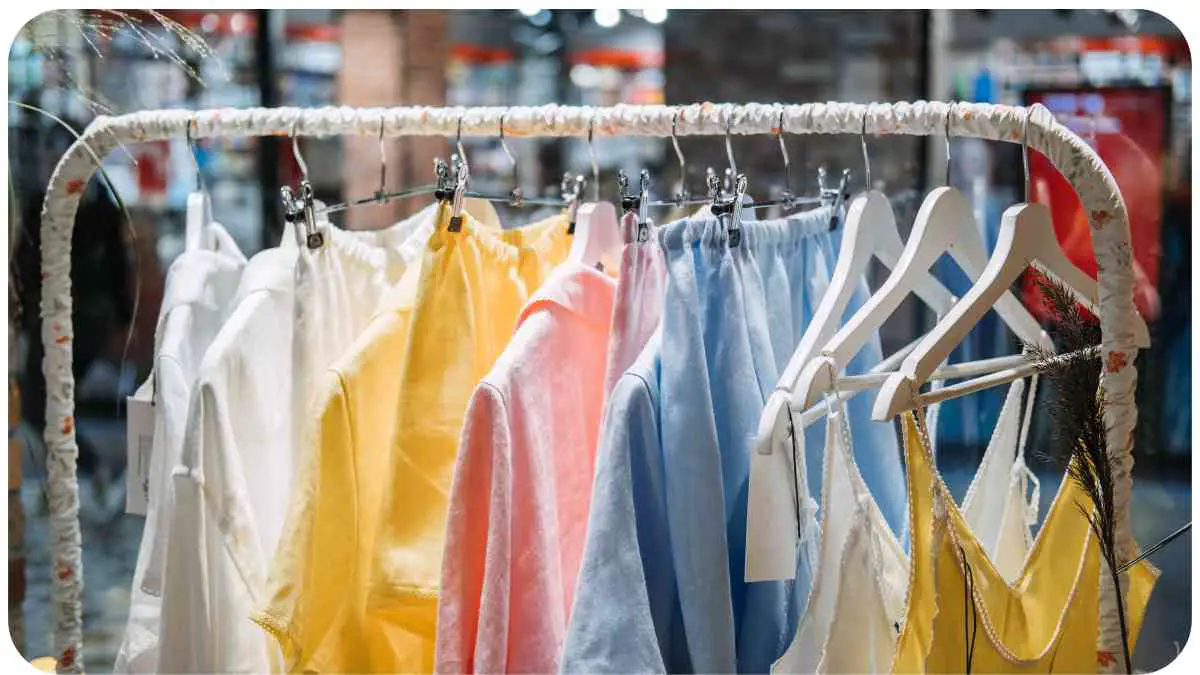Sustainable fashion is more than just a trend; it’s a movement towards a greener, more ethical clothing industry. However, as consumers and creators, we often encounter common problems when working with eco-friendly fabrics.
In this comprehensive guide, we’ll explore these challenges and provide expert insights on how to overcome them. Let’s embark on a journey to make sustainable fashion more accessible and effective.
| Key Takeaways |
|---|
| 1. Sustainable fashion is a growing movement focused on reducing the environmental and social impact of clothing. |
| 2. Common problems with eco-friendly fabrics include durability, high cost, limited style choices, difficulty in sourcing, care and maintenance, and a lack of information. |
| 3. To address these issues, choose sustainable fabrics carefully based on factors like purpose, sustainability rating, durability, style, and budget. |
| 4. Don’t be discouraged by initial challenges in sustainable fashion; start small, educate yourself, and consider DIY or upcycling. |
| 5. Supporting ethical brands and practicing responsible consumption can play a significant role in promoting sustainability in fashion. |
| 6. Explore further reading resources to deepen your understanding of sustainable fashion and its environmental impact. |
The Rise of Sustainable Fashion

Sustainable fashion has gained immense popularity in recent years. Consumers are increasingly conscious of the environmental and social impact of their clothing choices. As a result, designers, brands, and individuals are striving to adopt eco-friendly practices.
Understanding the importance of sustainable tourism is crucial in preserving our natural wonders. By choosing eco-friendly travel options, we contribute to the protection of our planet’s beauty
Common Problems with Eco-Friendly Fabrics
While sustainable fabrics offer numerous benefits, they also come with their fair share of challenges. Let’s delve into these issues and find solutions.
Understanding Sustainable Fabric Options
Before addressing the problems, it’s crucial to understand the various sustainable fabric options available in the market. From organic cotton to Tencel, each material has its unique characteristics.
Problem: Lack of Durability
Table 1: Durability Comparison of Sustainable Fabrics
| Sustainable Fabric | Durability Rating (1-5) |
| Organic Cotton | 3.5 |
| Hemp | 4.0 |
| Recycled Polyester | 3.0 |
| Tencel | 4.5 |
| Linen | 4.0 |
Lack of durability is a common concern with sustainable fabrics. To address this issue, it’s essential to choose materials that suit your needs. For high-wear items, consider hemp or Tencel, which score well in terms of durability.
Embark on a journey of responsible travel with our comprehensive guide. Learn how to make sustainable choices and minimize your environmental impact while exploring the world
Problem: High Cost
Table 2: Cost Comparison of Sustainable Fabrics
| Sustainable Fabric | Average Price per Yard ($) |
| Organic Cotton | 8.00 |
| Hemp | 10.50 |
| Recycled Polyester | 12.00 |
| Tencel | 14.50 |
| Linen | 9.50 |
High costs can deter many from adopting sustainable fabrics. However, considering the long-term benefits and ethical considerations, it’s worth the investment. Start with small projects if budget is a concern.
Problem: Limited Style Choices

Table 3: Style Options in Sustainable Fabrics
| Sustainable Fabric | Style Versatility (1-5) |
| Organic Cotton | 4.0 |
| Hemp | 3.5 |
| Recycled Polyester | 3.0 |
| Tencel | 4.5 |
| Linen | 4.0 |
Limited style choices are often associated with sustainable fabrics. However, the industry has evolved, and you can find a wide range of stylish options in eco-friendly materials like Tencel and organic cotton. Explore and experiment to discover your preferred style.
Discover 12 effective ways to practice sustainable tourism on your next vacation. From eco-friendly activities to responsible accommodation choices, you can make a positive difference.
Problem: Difficulty in Sourcing
Table 4: Sourcing Challenges for Sustainable Fabrics
| Challenge | Solution |
| Limited availability in local markets | Explore online fabric stores specializing in sustainability. |
| High demand and low supply | Plan your projects in advance and buy fabric early. |
| Lack of knowledge on sustainable sources | Educate yourself through online resources and forums. |
Sourcing sustainable fabrics can be tricky, especially if you’re new to the world of eco-fashion. However, with some research and strategic planning, you can find reliable sources for your materials.
Problem: Care and Maintenance
Table 5: Care and Maintenance Tips for Sustainable Fabrics
| Sustainable Fabric | Care Recommendations |
| Organic Cotton | Machine wash in cold water; line dry. |
| Hemp | Hand wash or gentle machine cycle. |
| Recycled Polyester | Cold water wash with like colors. |
| Tencel | Machine wash cold; hang to dry. |
| Linen | Machine wash gentle; tumble dry low. |
Proper care is essential to ensure the longevity of sustainable fabrics. Follow these care recommendations to make your eco-friendly garments last.
Problem: Lack of Information
Table 6: Resources for Information on Sustainable Fabrics
| Resource | Description |
| Sustainable Fashion Blogs | Blogs like “EcoStyle” and “Green Chic” offer valuable insights and tips. |
| Online Forums | Join forums such as “Eco-Fabrics Community” to connect with like-minded individuals. |
| Books | Read books like “The Conscious Closet” for in-depth knowledge. |
| YouTube Channels | Channels like “Sustainably Chic” provide video tutorials and reviews. |
Lack of information can be a barrier to making sustainable choices. Utilize these resources to stay informed and up-to-date on the latest trends and developments in sustainable fashion.
When it comes to travel, choosing ethical tour operators is essential. Find out how to support sustainable tourism and select operators committed to ethical practices.
Expert Advice: Choosing the Right Sustainable Fabric

Table 7: Key Factors for Selecting Sustainable Fabrics
| Factor | Consideration |
| Purpose | Determine the intended use of the fabric (e.g., casual wear, activewear, formal attire). |
| Sustainability Rating | Assess the eco-friendliness of the fabric (e.g., organic, recycled, biodegradable). |
| Durability | Consider the fabric’s durability for long-lasting use. |
| Style | Choose a fabric that aligns with your desired style and design. |
| Budget | Balance your budget with the cost of the sustainable fabric. |
Selecting the right sustainable fabric involves careful consideration of these key factors. Tailor your choice to your specific project and ethical priorities.
Personal Experience: Navigating Sustainable Fashion Challenges
As a seasoned sustainable fashion enthusiast, I’ve encountered my fair share of challenges. One memorable experience was when I decided to create a wardrobe entirely from sustainable materials. While it seemed like a daunting task at first, I gradually learned to overcome the hurdles. I realized that with patience and research, I could find the perfect sustainable fabrics for my projects.
Success Stories: Brands Leading the Way
Table 8: Brands Excelling in Sustainable Fashion
| Brand | Sustainability Initiatives |
| Patagonia | Pioneering the use of recycled materials in outdoor apparel. |
| Eileen Fisher | Commitment to circular fashion with recycling and resale programs. |
| Stella McCartney | Incorporating vegan and cruelty-free materials into high fashion. |
| Toms | One-for-One giving model; sustainable shoes and eyewear. |
Several brands have set exemplary standards in sustainable fashion. Studying their practices can provide valuable insights into how to make eco-friendly choices.
Practical Tips: Making Sustainable Fashion Choices
- Start Small: If you’re new to sustainable fashion, begin with a few eco-friendly pieces and gradually expand your collection.
- Educate Yourself: Stay informed about sustainable fabrics, ethical brands, and responsible production practices.
- DIY and Upcycling: Consider repurposing old clothing or creating your own designs from sustainable fabrics.
- Support Ethical Brands: Look for brands that prioritize fair labor practices and environmental responsibility.
- Invest in Quality: High-quality sustainable pieces may have a higher upfront cost but are likely to last longer.
- Maintenance Matters: Follow care instructions to prolong the life of your eco-friendly garments.
- Donate or Recycle: When you’re done with clothing, donate it or recycle it responsibly to minimize waste.
Are you passionate about sustainability? Learn the art of finding eco-friendly hotels and B&Bs for your next trip. Make conscious choices for a greener and more responsible travel experience.
Conclusion
In the ever-evolving world of sustainable fashion, it’s essential to be equipped with the knowledge and strategies to overcome common challenges. By choosing the right fabrics, sourcing responsibly, and staying informed, you can contribute to a more eco-friendly and ethical fashion industry. Remember, your sustainable fashion journey can start with small steps and grow into a significant positive impact on the planet.
As you embark on this exciting journey, keep in mind the importance of durability, style choices, and responsible sourcing. Learn from expert advice, success stories, and practical tips to make sustainable fashion a seamless part of your life.
Let’s work together to fix common problems with eco-friendly fabrics and make sustainable fashion a sustainable reality for all.
Further Reading
Here are some additional resources to explore for further insights into sustainable fashion:
Sustainable Fashion: How to Reduce Your Environmental Impact
Explore practical tips on reducing your environmental impact through sustainable fashion choices.
Sustainability in Textiles: 7 Best Eco-Friendly Practices in the Fashion Industry
Discover seven of the best eco-friendly practices adopted by the fashion industry to promote sustainability.
What Are the Disadvantages of Sustainable Fashion?
Gain insights into the potential disadvantages and challenges associated with sustainable fashion.
FAQs
What is sustainable fashion, and why is it important?
Sustainable fashion refers to clothing and accessories produced with consideration for environmental and social impacts. It’s important because it reduces harm to the planet and promotes ethical practices in the fashion industry.
How can I make my wardrobe more sustainable?
You can make your wardrobe more sustainable by choosing eco-friendly fabrics, supporting ethical brands, and practicing responsible consumption, such as upcycling or donating clothing.
Are sustainable fashion items more expensive?
While some sustainable fashion items may have a higher initial cost, they often offer better long-term value due to their durability. Plus, they contribute to a more sustainable future.
What are some sustainable alternatives to traditional fabrics?
Sustainable alternatives include organic cotton, hemp, Tencel, and recycled materials like polyester and denim.
How can I find sustainable fashion brands?
You can find sustainable fashion brands by researching online, checking labels for certifications, and exploring directories and fashion blogs dedicated to eco-friendly clothing options.

I am Hellen, I’ve been passionate about sustainability for as long as I can remember. It’s something that my mom taught me from a young age, and it’s something that has shaped my life in so many ways.

